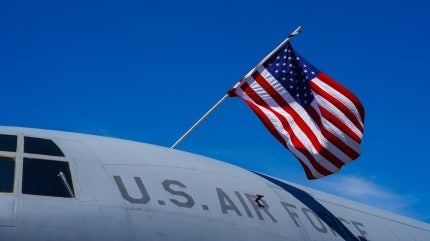
US Department of Air Force (DAF) Secretary Frank Kendall has provided a vision for the future structure of the DAF, which encompasses both the Air Force and Space Force, by the year 2050.
The outgoing Secretary emphasised expanding the Space Force, the need for significant improvements in training and technology to prepare airmen and Guardians for the possibility of engaging in a future conflict with China.
The recommendations were part of the formal report, titled “The Department of the Air Force In 2050”.
It does not propose a detailed strategy starting from 2025 to realise this vision. Instead, it offers an overview of the potential military capabilities that may be in demand by the nation as the country approaches the mid-21st century, within the limits of foresight allowed by such a long-term forecast.
It emphasises the persistent existence of national security threats, including both conventional and nuclear forces capable of challenging the US and its allies.
The report identifies China as a continuous strategic competitor, particularly in the Indo-Pacific region, and states the need for the Air Force and Space Force to evolve from their current state.

US Tariffs are shifting - will you react or anticipate?
Don’t let policy changes catch you off guard. Stay proactive with real-time data and expert analysis.
By GlobalDataKendall said: “We’re going to need a much bigger, much more capable, much more powerful Space Force.
“… That’s a transformation that’s already started and we’ve made some pretty good progress. … We also need a lot of counter-space capabilities. … We’re going to have to do something to counter the militarization of space that China has embark upon largely to target our joint force and largely to deny us the capabilities to do the same things to Chinese forces.”
The report details ongoing efforts to reoptimise the department for great power competition.
This overhaul includes the creation of a Space Force Futures Command and an Air Force Integrated Capabilities Command, the formation of mobile operational wings, new acquisition and technology centres and an updated education system for personnel.
It also encompasses the reintroduction of warrant officers in cyber and IT roles, and strategic organisations within the DAF Secretariat for programme assessments, modernisation, and competition strategies.
The report notes: “Constrained budgets, reluctance to retire obsolete platforms, reluctance to embrace new technologies and exploit them fully, reluctance to limit our overseas commitments — all of these things can have a negative impact on our ability to get to where we’re going to need to be to be competitive with China in particular.”
It further highlights the importance of technical advancements such as AI, cyber capabilities, and the development of collaborative combat aircraft (CCA) that operate alongside crewed aircraft like the F-35.
The document asserts that while many transformations are already in progress, continued refinement and expansion of these capabilities are critical to support the National Defense Strategy.
The report concludes that the future competitiveness of the Air Force and Space Force hinges on adequate resourcing and proactive implementation of the strategies outlined.



